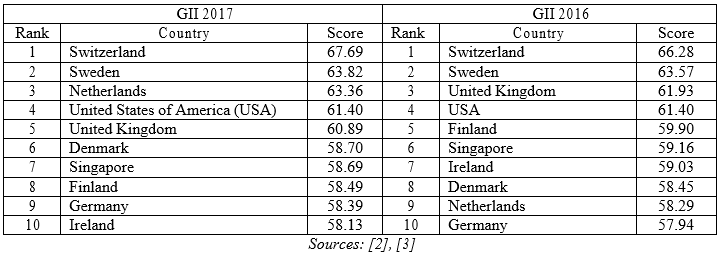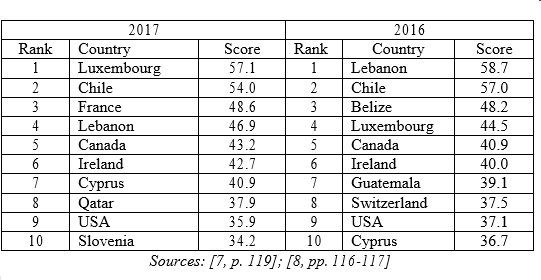Innovative entrepreneurship for economic growth in the European Union

Contributo selezionato da Filodiritto tra quelli pubblicati nei Proceedings “International Conference on Economics and Administration - 2018”
Per acquistare i Proceedings clicca qui:
http://www.filodirittoeditore.com/index.php?route=product/product&path=67&product_id=149
Contribution selected by Filodiritto among those published in the Proceedings “International Conference on Economics and Administration - 2018”
To buy the Proceedings click here:
http://www.filodirittoeditore.com/index.php?route=product/product&path=67&product_id=149
Sorin-George Toma [1], Paul Marinescu [2]
[1] Faculty of Administration and Business, University of Bucharest, (ROMANIA)
[2] Faculty of Administration and Business, University of Bucharest, (ROMANIA)
1. Abstract
2. Introduction
3. Defining innovative entrepreneurship
4. Innovative entrepreneurship, an engine for growth in the EU
5. Conclusions
1. Abstract
Innovation and entrepreneurship has become key factors in achieving economic growth, creating jobs and improving the living standard of people. This is why numerous stakeholders, such as governments and companies, are involved in fostering innovative entrepreneurship at different levels. The paper aims to briefly present the concept of innovative entrepreneurship and to highlight its relationship with economic growth in the European Union. To such ends, the authors used a quantitative research method.
2. Introduction
In the last decades both developed and developing countries have witnessed the expansion of innovation and entrepreneurship worldwide. Innovation and entrepreneurship has become key factors in achieving economic growth (EG), creating jobs and improving the living standard of people. This is why numerous stakeholders, such as governments, companies, policy makers, researchers and practitioners, are involved in fostering innovative entrepreneurship (IE) at national, regional and global levels. As part of its full commitment to supporting European competitiveness, the European Union (EU) has understood the need to promote and stimulate IE within an “Innovation Union” [5] and, therefore, launched the program Horizon 2020 [6].
The paper aims to briefly present the concept of IE and to highlight its relationship with EG in the EU. To such ends, the authors used a quantitative research method.
3. Defining innovative entrepreneurship
The concepts of entrepreneurship and innovation are closely linked and constitute important EG drivers [9]. As a mixture of entrepreneurship and innovation, IE lies at the intersection of three related areas: small and medium enterprises (SMEs), young and high-growth businesses, and innovative businesses [10], and represents “an important means by which technical change gets translated into EG” [1, p. 4].
4. Innovative entrepreneurship, an engine for growth in the EU
Since the launching of the program Horizon 2020, the EU has stimulated research and innovation, and promoted innovative entrepreneurship in order to ensure a long-term EG. In this respect, six policy dimensions have proved to be relevant for IE: access to finance, access to knowledge, market environment, access to labor, regulatory framework, entrepreneurial capabilities and culture [10].
For example, the knowledge networks nourish IE activities and promote investments in innovation Several countries of the EU obtained high scores in innovation in recent years. According to the Global Innovation Index (GII), Europe had 8 countries out of 10 in the global hierarchy in the period 2016-2017 (Table 1). The overall GII score is calculated as a simple average of the Innovation Input Sub-Index (e.g., human capital and research) and the Innovation Output Sub- Index (e.g., knowledge and technology outputs).

As a consequence, several countries of the EU registered high innovation level for the total early-stage entrepreneurial activity (TEA – the percentage of the adult population aged 18-64 years who are in the process of starting a business or started a business less than 42 months old before the survey took place) in the period 2016-2017, according to the Global Entrepreneurship Monitor (GEM – Table 2). These results are not surprisingly as most of the EU countries are innovation-driven economies (e.g., Germany, France, Netherlands, Ireland) that highly contribute to the EG of the EU. This is why designing and implementing IE policies has to be a top priority in the EU. In order to foster EG through IE three key policy options should be taken into consideration:
• increasing entrepreneurship in general,
• increasing the frequency of high-growth firms,
• increasing innovation and research & development in SMEs [4].

5. Conclusions
Over the past decades, entrepreneurship and innovation have become “hot topics” in the business world as well as in education and academic research. The emergence and development of IE, as one of the key EG drivers, express the need to stimulate and stimulate entrepreneurship not only in the EU, but at a global level.



